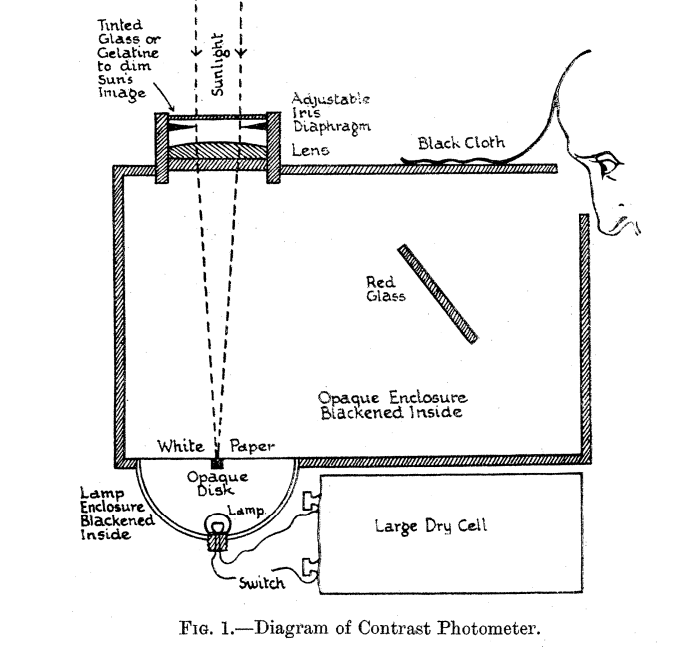
Richardson was a seminal influence in many fields including numerical analysis. A good introduction to his work is at "LEWIS FRY RICHARDSON AND HIS CONTRIBUTIONS TO MATHEMATICS, METEOROLOGY, AND MODELS OF CONFLICT," J.C.R. Hunt, Annu. Rev. Fluid. Mech., 1998
A quote:
'Lewis showed early on an independent mind and an empirical approach, such as when he tested at the age of five the proposition learned from his elder sister that "money grows in the bank." He buried some money in the garden and was disappointed to find that it did not grow.'
Lewis Fry Richardson was a genuine polymath, he contained multitudes. A Quaker who refused more than once (at considerable personal cost) to serve the government on terms inimical to his beliefs, he investigated human conflicts and established a power law relationship between the frequency and magnitude of mass killing (which has been extrapolated by some to indicate that we humans will kill ourselves off once evry few millenia or so...); is personally responsible for the Richardson number in fluid flow; the 4/3 power law in the spreading rate of turbulent flow (as apparently may be verified by throwing parsnips off a pier into Loch Long); patented a sonar after the loss of the Titanic; studied the properties of those curious wiggly objects today better known as fractals; the list goes on. (Also his wife was a saint.)
An achievement that leads to my next reference was his pioneering study of numerical methods for weather prediction. In essence he solved differential equations using finite differences by hand. In 1922, he published a book, "Weather Prediction by Numerical Process" at the Cambridge University Press. Richardson was supremely honest, (a difficult but very important part of being a good scientist) and he wrote about the failure of his methods to describe a weather system over Germany in 1910. That part of the book was written during his service as an ambulance driver in the Great War in France, "on a heap of hay in a cold wet rest billet." The reason for the failure was the numerical explosion of the hi-frequency gravity wave modes which are better handled today.
Again from the article by Mr. Hunt:
'In the final chapter, LFR briefly discussed the practical organization of such forecasting, using only humans computing with the aid of slide rules and calculating machines. He imagined a large hall, similar to a concert hall, with the chief forecaster acting like a conductor organizing the information flowing in space to him from all parts of the hall. But his estimate for the number of computers required to race "the weather for the whole globe" (Richardson 1922) was 64,000, which meant the hall would be more like a football stadium. (At that time, he never imagined that the calculating machines could eventually do the whole job unaided.)'
the next reference is: "The ENIAC Forecasts: A Recreation", Peter Lynch, University College, Dublin.
Richardson's methods were refined over the years. In 1949 five men came to the Ballistic Research Laboratory, where ENIAC lived, to run a seminal weather calculation. I quote here:
'The five players were Jule Charney, Ragnar Fjortoft, John Freeman, George Platzman and Joseph Smagorinsky. The work continued for 33 days and nights, with only brief interruptions. The trials and tribulations of this intrepid troupe were described in Platzman's lecture (Platzman 1979). There were the usual blunders familiar to programmers. The difficulties were exacerbated by the primitive machine language, the requirement to set numerous switches manually, the assignment of scale-factors necessitated by the fixed-point nature of ENIAC, and the tedious and intricate card-deck operations (about 100,000 cards were punched during the month). Despite these difficulties, the expedition ended in triumph. Four 24-hour forecasts were made, and the results clearly indicated that the large-scale features of the mid-tropospheric flow could be forecast barotropically with a reasonable resemblance to reality.'
More symmetrically, the article continues:
'It is gratifying that Richardson was made aware of the success in Princeton; Charney sent him copies of several reports, including the paper on the ENIAC integrations (Platzman 1968). Richardson congratulated Charney and his collaborators `on the remarkable progress which has been made in Princeton; and on the prospects for further improvement which you indicate'. He then described a `tiny psychological experiment' on the diagrams in the Tellus paper, which he had performed with the help of his wife Dorothy. For each of the four forecasts, he asked her opinion as to whether the initial data (panel a) or the forecast (panel d) more closely resembled the verifying analysis (panel b)--in effect, whether a prediction of persistence was better or worse than the numerical prediction. His wife's opinions were tabulated by Richardson in his letter to Charney, reproduced in Platzman (1968).'
Here is a charming diagram from one of his papers published just after the end of the war which he must have composed in the horrors of the front. The paper is:
Proceedings of the Royal Society of London. Series A, Containing Papers of a Mathematical and Physical Character, Vol. 96, No. 674 (Aug. 1, 1919), pp. 19-31 "Measurement of Water in Clouds"
The man peering in looks nervous.

For the article on bioethics and mice please see here
For a global look at precipitation patterns, see here .
For a look at precipitation patterns in E. China, see here .
If you were looking for the post on orbital orrery,here it is.
If you were looking for something else on this site, please email sidd@situ.com